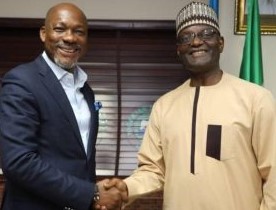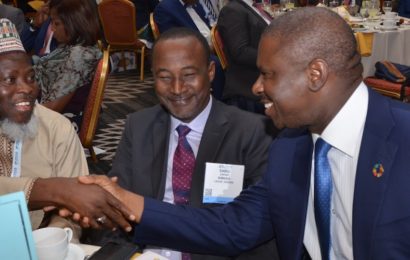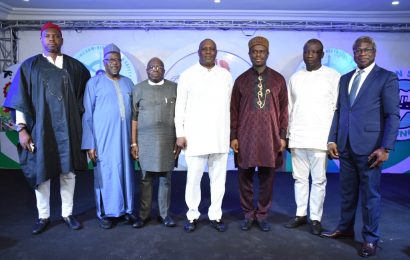Accredicted by NIMASA, the maritime training institutions offer courses in line with the International Convention on the Standards of Training, Certification and Watchkeeping for Seafarers (STCW).
Speaking at a world press briefing in Lagos on Tuesday, the Director General of NIMASA, Dr Dakuku Peterside explained that the 16 Maritime Training institutions including the Maritime Academy of Nigeria, Oron and the Federal College of Fisheries and Marine Technology were inspected during the exercise.
Dakuku explained that the agency has put modalities in place to increase revenue through the billing of pipelines.
He said:“The quest to enhance our revenue by identifying untapped resources was exploited by the current Management in the area of statutory provisions of the Sea Protection Levy Gazette. Within the last one year, NIMASA has commenced the billing of Pipelines, Oil Rigs and FPSO’s”.
Dakuku, who spoke on sundry issues said: “The Nigerian Seafarers Development Programme is one project this administration holds in high esteem.
“So far, 1,045 beneficiaries have graduated from the project, representing 42% graduates of the over 2500 NIMASA sponsored beneficiaries.
“A breakdown shows that 226 graduated from the Arab Academy in Egypt, 76 from South Tyneside, Newcastle in England while 743 graduated from various partner Universities in The Philippines.
“We took a closer look at the NSDP project and discovered that the non inclusion of Seatime training in some of the packages was a challenge. Let me inform you that this issue is being tackled head-on as we have progressed discussion with the schools in Egypt and Newcastle to directly facilitate sea time training for our graduates. It is noteworthy that only 5 Nigerians are onboard seagoing vessels, While a country like Philippines have over half a million seafarers. Our goal is to ultimately domesticate the training of seafarers in Nigeria.
“Let me use this opportunity to correct the erroneous impression that Nigeria has not made progress with the Cabotage regime. A lot of progress has been made. Before the Cabotage regime came into being, less than 12% of Nigerians were onboard vessels operating in Nigerian waters, today, the figures have changed significantly as over 60% of workers onboard vessels operating under the Cabotage regime are now Nigerians. It may also interest you to note that before 2003, less than 3% of vessels operating on our waters were flagged Nigerian. However, today, we have over 60% vessels doing business in Nigerian waters flying the Nigerian Flag.
“Another good news about the Cabotage regime is the fact that we have been able to achieve 20% in building Cabotage vessels from a completely foreign dominated era. Our aim is to target 100% Cabotage compliance in the nearest future.
“The issue of the Cabotage Vessel Financing Fund is one we have taken a critical look at and I can categorically say that we are addressing the issues militating against the fund being fully operational and accessible.
“The Nigerian Flag has also enjoyed significant growth within the past twelve months. While 262 vessels with a total Tonnage of slightly over 232,000 GRT were Registered in 2015, the figures almost doubled in 2016 as 370 vessels with a total Tonnage of almost 420,000 GRT were registered within the past 12 months”.






